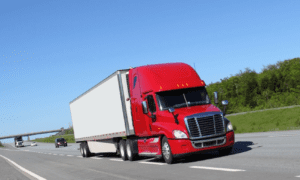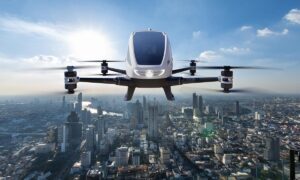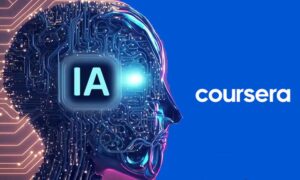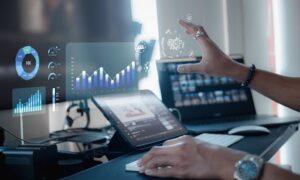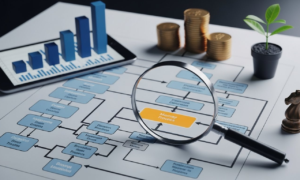Introduction:
In the realm of manufacturing and automation, a groundbreaking synergy is unfolding between Artificial Intelligence (AI) and Robotics. This dynamic fusion is not just revolutionizing traditional production processes but is also extending its transformative reach to various industries beyond manufacturing. This article explores the profound impact of the collaboration between AI and Robotics, delving into how this synergy is redefining automation, enhancing efficiency, and reshaping the future of industries across the board.
The Evolution of Robotics:
Robotics, once confined to repetitive and labor-intensive tasks, has undergone a remarkable evolution. Early industrial robots were rigid and lacked adaptability, limiting their utility to specific, pre-programmed functions. However, advancements in technology have ushered in a new era of robotics characterized by flexibility, precision, and intelligence.
Enter Artificial Intelligence:
The integration of Artificial Intelligence into robotics has been a game-changer. AI endows robots with the ability to learn, adapt, and make decisions in real-time, transforming them from mere tools into intelligent collaborators. Machine Learning algorithms empower robots to analyze data, identify patterns, and continuously refine their performance, unlocking unprecedented potential for automation.
Synergies in Action:
Enhanced Precision and Flexibility:
The marriage of AI and Robotics results in robots that can perform tasks with unparalleled precision and adaptability. AI algorithms enable robots to adjust their movements based on changing environmental factors, making them suitable for intricate tasks in industries such as electronics, healthcare, and logistics.
Collaborative Robotics (Cobots):
AI-driven robotics has given rise to collaborative robots or cobots. Unlike their predecessors, cobots are designed to work alongside human operators, enhancing productivity and safety on the factory floor. This collaborative approach combines the strengths of human ingenuity with the efficiency and repeatability of robotic precision.
Predictive Maintenance:
AI algorithms enable robots to predict when maintenance is needed, minimizing downtime and maximizing operational efficiency. By continuously monitoring their own performance and identifying potential issues, robots equipped with AI can schedule maintenance activities before a breakdown occurs, ensuring uninterrupted production.
Autonomous Vehicles and Drones:
In manufacturing and logistics, autonomous vehicles and drones powered by AI are streamlining material handling and transportation. These intelligent machines can navigate complex environments, optimizing routes, avoiding obstacles, and improving overall logistics efficiency.
Applications Beyond Manufacturing:
The impact of AI and Robotics extends far beyond the confines of manufacturing plants. Various industries are leveraging this powerful synergy to redefine automation and enhance their operational capabilities.
Healthcare:
In healthcare, AI-powered robotic systems are assisting surgeons with precision surgeries, automating repetitive tasks in laboratories, and even providing companionship for patients. The integration of AI enhances the diagnostic accuracy of medical robots, leading to improved patient outcomes.
Logistics and Warehousing:
The logistics and warehousing industry is witnessing a revolution with AI-driven robots handling tasks such as inventory management, order picking, and package delivery. These robots work seamlessly alongside human workers, increasing operational efficiency and reducing errors.
Construction:
Construction sites are benefiting from AI and Robotics through the use of automated machinery for tasks like bricklaying, excavation, and welding. The precision and efficiency of AI-powered construction robots contribute to faster project completion and improved safety standards.
Agriculture:
The agriculture sector is embracing robotic technologies for tasks such as planting, harvesting, and monitoring crop health. AI algorithms analyze data from sensors and drones, providing farmers with valuable insights for precision agriculture and resource optimization.
Challenges and Considerations:
While the synergy between AI and Robotics holds immense potential, it is not without challenges. Ethical considerations, job displacement concerns, and the need for robust cybersecurity measures are critical aspects that demand careful attention. Striking a balance between technological advancement and ethical responsibility is essential to ensuring the responsible deployment of AI-driven robotics.
The Role of Human Expertise:
As AI and Robotics redefine automation, it’s crucial to emphasize the complementary role of human expertise. While robots can handle repetitive and dangerous tasks with efficiency, human creativity, critical thinking, and emotional intelligence remain irreplaceable. The collaborative approach, where humans and machines work together seamlessly, represents the optimal path forward for industries seeking to harness the full potential of AI and Robotics.
Future Trends and Implications:
Looking ahead, the synergy between AI and Robotics is poised to shape the future of automation in ways that were once considered science fiction. The emergence of swarm robotics, where multiple robots collaborate on tasks, and the development of AI algorithms capable of unsupervised learning are indicative of the exciting possibilities on the horizon.
Implications for the Workforce:
As automation continues to evolve, there is a need for upskilling the workforce to adapt to the changing landscape. The integration of AI and Robotics creates opportunities for workers to transition to roles that require creativity, problem-solving, and collaboration—areas where human skills excel and complement the capabilities of intelligent machines.
Conclusion:
AI and Robotics, in a synergistic dance, are not just transforming manufacturing but are also extending their influence across diverse industries. The precision, adaptability, and efficiency offered by this powerful combination redefine automation, opening new avenues for innovation and progress. As we navigate this era of technological convergence, it is essential to embrace the collaborative potential of AI and Robotics, ensuring that these advancements contribute to a future where human expertise and intelligent machines coexist harmoniously, driving progress and prosperity across industries.


